10 best backpacking tents UK 2023: one-person hiking tents that are lightweight and portable
This article contains affiliate links. We may earn a small commission on items purchased through this article, but that does not affect our editorial judgement.
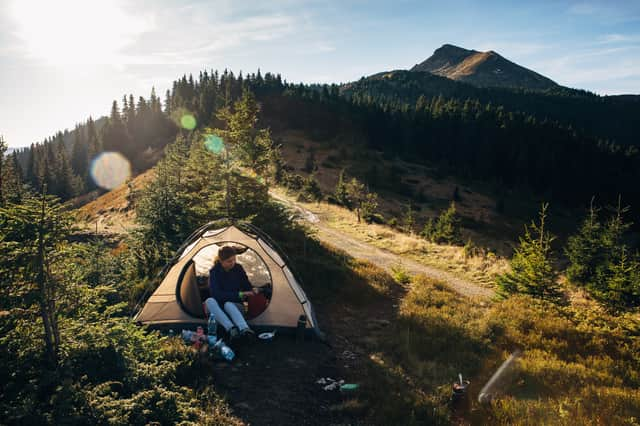

Not all tents are created equal – they range from huge family-friendly designs with as much space inside as a small cottage to light and portable one-person tents that can fit into a small rucksack.
Backpacking tents sit at the smallest end of the tent spectrum, and as the name suggests, are designed to be carried with you on your adventures – they’re portable and compact enough to fit into backpacks or bike panniers, and are designed with hikers, wild campers, bike backpackers and anyone else covering long distances and setting up a new camp each evening in mind.
What size tent should I go for?
You’ll see tents sold according to the amount of people they can sleep - one-person tents really do only fit one, and you may still want to choose a two-person tent if you want extra space and comfort. Most two-person tents should fit two campers plus their backpacks, and while these are heavier, they can usually be divided up to share the weight.
What is the ideal weight for a hiking tent?
Weight is at a premium on hiking and fastpacking adventures – after all, you have to carry all of your camping equipment with you. A one-person tent that weighs under two kilos or a two-person tent under four kilos is your best choice, although there are tents that weigh as little as 700g in our round-up.
Best backpacking tents at a glance:
- Best for hot weather: MSR Access 2 backpacking tent
- Best for ultra-light adventures: Vango F10 Project Hydrogen
- Best for a budget option: Decathlon Self-Standing 3 Seasons Trekking
- Best for wild campers: Snugpak Ionosphere
- Best for storing kit: Vango Nevis 200
- Best all-rounder: Berghaus Grampian 2 Tent
- Best affordable ultralight tent: Sierra Designs Clip Flashlight 3000 2 Tent
- Best for comfort: Robens Boulder 3 Tent
- Best eco-friendly tent: Sea to Summit Ikos TR 2 Tent
Be aware: hiking tents are small
While getting a comfortable night’s sleep is important, a backpacking tent isn’t designed to be roomy like family or festival tents – many have low ceilings and limited space, as they’re designed to just be used at night rather than as living space.
We recommend picking a tent you can at least sit up in, and tents with an outer sheet that can be pegged out to create a porch are also useful, offering extra storage space for your boots and other kit.
Make sure it will stay dry
Waterproofness is your other priority. The model you pick should be a ‘twin skin’ (a tent with an outer ‘fly’ layer as well as an inner tent) and feature a waterproof rain fly as well as a built-in nylon floor to stop water seeping in from the ground.
You’ll see both rounder dome tents and narrower tunnel tents available - if you’re planning on sleeping on exposed mountain sides, a dome-style tent is a good choice for better wind resistance, and guy ropes will further help you to secure the tent against high winds.
Get kitted out for your camping and backpacking adventures
We have detailed guides to the best camping stoves for heading out camping. Want to steady your stride? These are the best walking poles for hiking.
Keep it comfy with the best camping folding chairs, and sleep on the best air beds around, as listed here. And keep things illuminated with a great camping head torch.
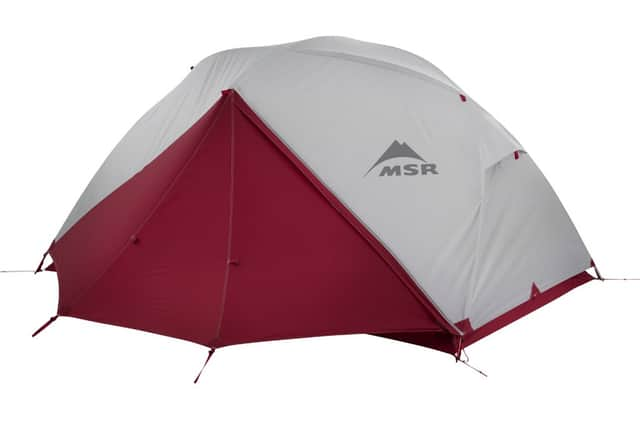

Key specs – Capacity: Two-person; Weight: 1.64kg;
We’ve never met an MSR tent we didn’t like – they stand out for quality, and are a great choice if you want a backpacking tent that’s built to last.
Our pick of the brand’s designs for backpackers is the Access 2, which feels like great quality both to set up and to sleep in. It’s the work of minutes to click together the Access’s poles, and the inside of the tent is roomy enough for two people, with more than enough space to sit up plus well-placed pockets for your belongings. There are wide porches outside the two doors, perfect for storing extra kit.
On a hot night you can even pitch the mesh inner tent on its own, which is great for a spot of stargazing. The outer fly is reliably waterproof if the heavens do open.
A one-person version is also available.
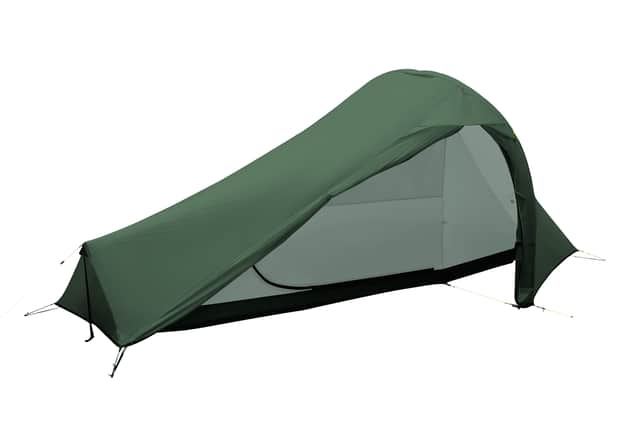

Key specs – Capacity: One-person; Weight: 700g;
The impressive Project Hydrogen is one of the lightest backpacking tents on the market at just 700g.
It packs down to the size of a loaf of bread, and is a doddle to carry in smaller rucksacks or bike panniers – you’ll barely notice you’ve got a tent on you, even if you’re walking, cycling or racing over long distances.
Inside, there’s enough space to fit one person rather snugly, but there’s still room to sit up and the porch can store extra kit.
The Project Hydrogen is an ‘air’ tent and its hollow poles are inflated using an included bike pump, which is quick and fuss-free, and well-placed guy ropes make the erected tent sturdy in stormy weather. A pricy option, but well worth it for dedicated ultralight explorers.
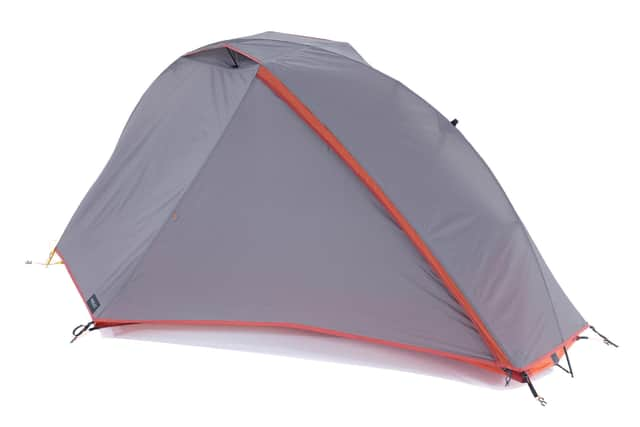

Key specs – Capacity: One-person; Weight: 1.3kg;
The most affordable backpacking tent in our round-up is Decathlon’s rather nifty 3 Seasons Trekking, which we reckon is perfect if you’re in the market for a one-person backpacking tent on a budget.
It weighs just 1.3kg, although it doesn’t pack down as small as some other one-person tents on test, so you’ll need a larger backpack to carry it in. The 3 Seasons Trekking is well-sized for one, with big storage pockets and a porch.
We found it waterproof on test and windproof enough to work for most camps besides high mountain conditions, although it does need regular drying out to stop condensation from forming, so it performs best in dry weather.
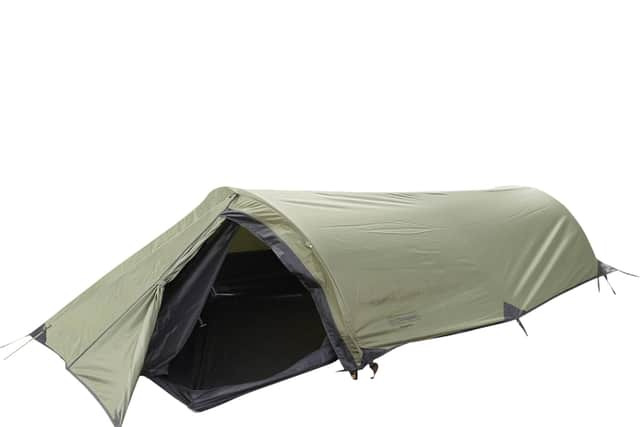

Key specs – Capacity: One-person; Weight: 1.52kg;
If small and compact is top of your tent shopping list, go for Snugpak’s dinky Ionosphere.
The Ionosphere sits low to the ground and feels rather like you’re sleeping in a bivvy bag with some extra headroom – there’s limited room for movement inside, but its design means that it packs down to a compact package, pitches in just a few minutes and weighs just 1.5kg.
This tent was clearly designed with adventure racers in mind, and its dark green colourway also makes it a subtle choice for discreet wild camping. You can sleep in the inner mesh tent alone in hot weather or add the waterproof outer fly for wet conditions, and a repair kit is also included – great if you’re venturing far from the beaten path.
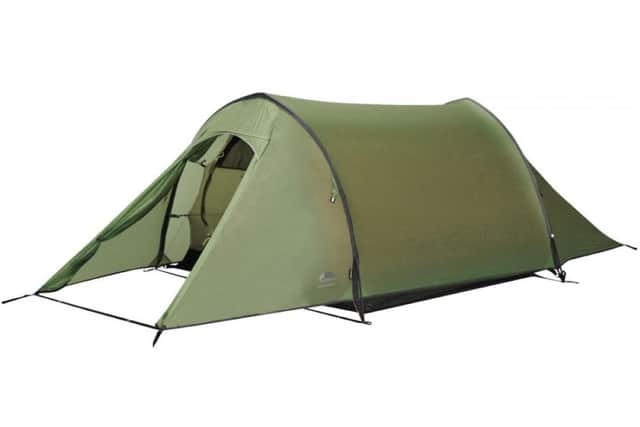

Key specs – Capacity: Two-person; Weight: 1.8kg;
This tent offers a small pack weight, size, and decent living space in an easy to pitch two man tent ideal for your next wild camping, backpacking, hiking and bike packing adventure.
The Vango Nevis has a waterproof, durable outer fabric, highly waterproof and durable groundsheet and a simple hooped pole construction with struts for ease of pitching and maximum inner space.
This tent has two side entry doors to make it easier to access for two occupants and is built to withstand strong and changeable weather.
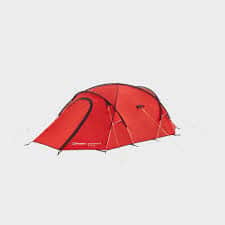

Key specs – Capacity: Two-person; Weight: 4.24kg;
A great all-rounder if you’re after a two-person tent, Berghaus’s roomy Berg Grampian 2 works well for festivals and traditional camping weekends away as well as for dedicated backpacking trips, and can easily be split between two packs in order to share the 4.24kg load.
Two generous porches take extra gear, and the Grampian’s geodesic design leaves a good amount of living space inside and makes the tent stand up very well in windy or stormy weather.
Our only critique would be that that bright red colourway isn’t exactly subtle – pick the green version if you’re into wild camping.
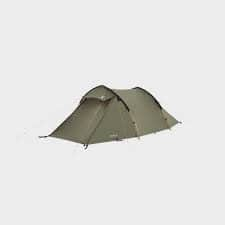

Key specs – Capacity: Three-person; Weight: 3.37kg;
Off on an adventure as a trio? OEX’s affordable Jackal III offers a great space to weight ratio and sleeps three people if you don’t mind being a bit snug inside, or two with plenty of room.
At 3.37kg the Jackal III is as lightweight as some two-person tents we tested, and it also comes complete with two stuff sacks, and is designed to be easily split between two backpacks for transportation.
The waterproof fly sheet and groundsheet are sturdy and weatherproof, although pitching them is a bit fiddly. There’s also a roomy porch for storage.
In general, this is a well-designed tent for a very palatable price.
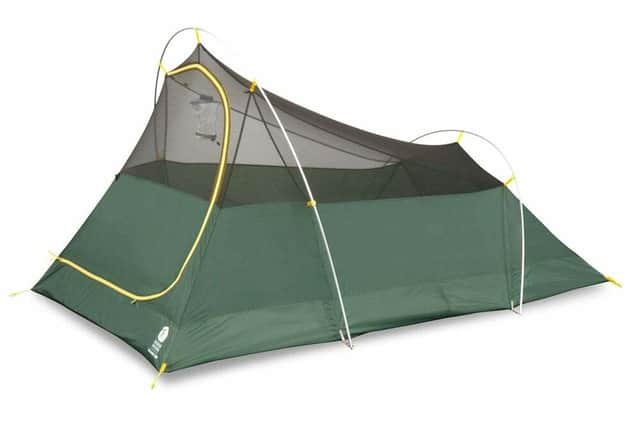

Key specs – Capacity: Two-person; Weight: 2kg;
Ultralight camping kit is a great idea if you’re into hiking, bikepacking or camping far from the madding crowds, but making kit as light as possible while ensuring good quality and weatherproofing can make a lot of featherweight outdoor kit very expensive indeed.
Not so Sierra Designs’ Clip Flashlight 3000 2, a dinky two-person tent that takes up little space when packed and weighs 2kg – light and compact enough to pop in a backpack or bike pannier when you hit the trails. While living space is limited, there’s a large vestibule for sorting kit.
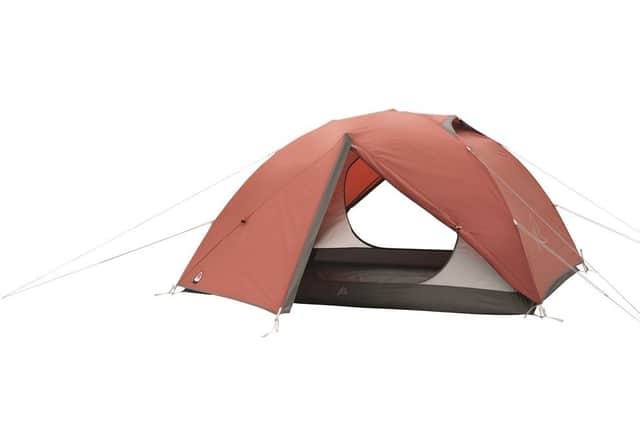

Key specs – Capacity: Three-person; Weight: 2.9kg;
Need extra room without adding too much weight? Roben’s Boulder is a brilliant three-man tent that still weighs in at under 3kg. There’s just enough space for three people with limited kit to share, or it’s positively palatial for two.
We love the roomy twin vestibules and generous head height, which make sorting and storing kit easier, and a waterproof outer fly and rain-safe vents make the tent feel airy but protected from the elements. All in all, great comfort at a modest price tag.
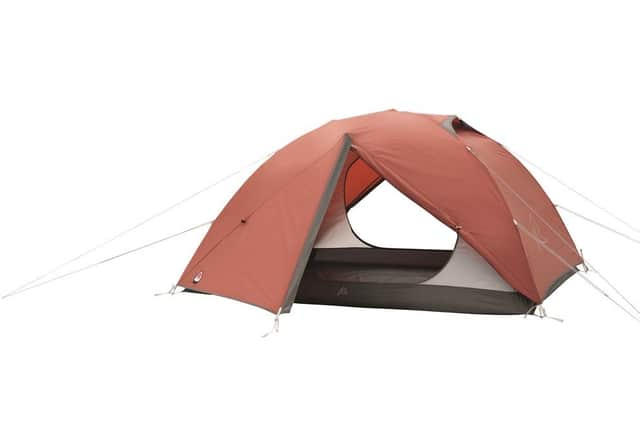

Key specs – Capacity: Two-person; Weight: 2.5kg;
Brand new for 2023’s camping season, Sea to Summit’s Ikos TR 2 is a roomy, good-looking two-person tent with plenty of space to relax in. Where this new design really stands out, though, is in its eco-friendly material choices – it includes a chemical-free flame-resistant fabric, a PFC-free (PFCs are Perfluorinated chemicals, which can be toxic to the humans and the environment) water repellent finish and innovative poles which are made with a greener anodization process for lessened environmental impact.
Aimed at beginner backpackers, the Ikos features a breathable mesh inner layer, a waterproof outer fly and a clever ‘hangout’ mode that allows you to peg out the flysheet in front of the tent so you can sit underneath it, ideal for cooking or just chilling out.